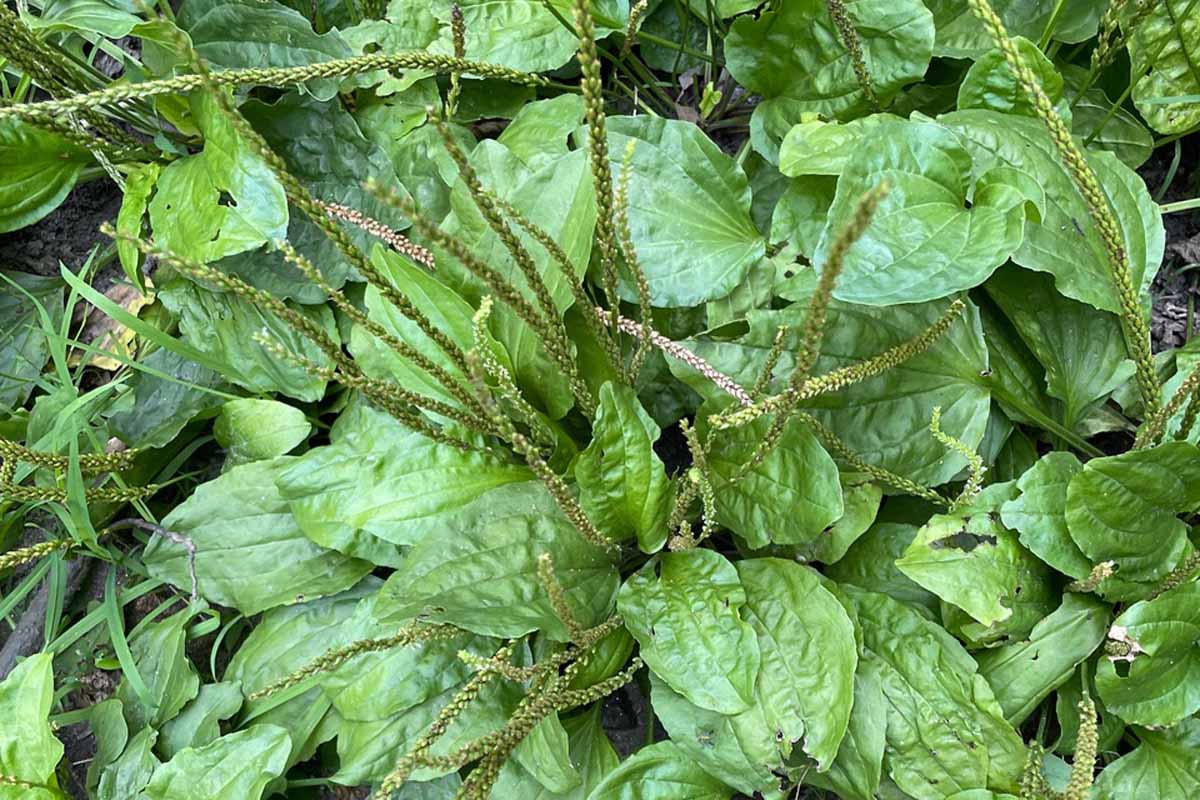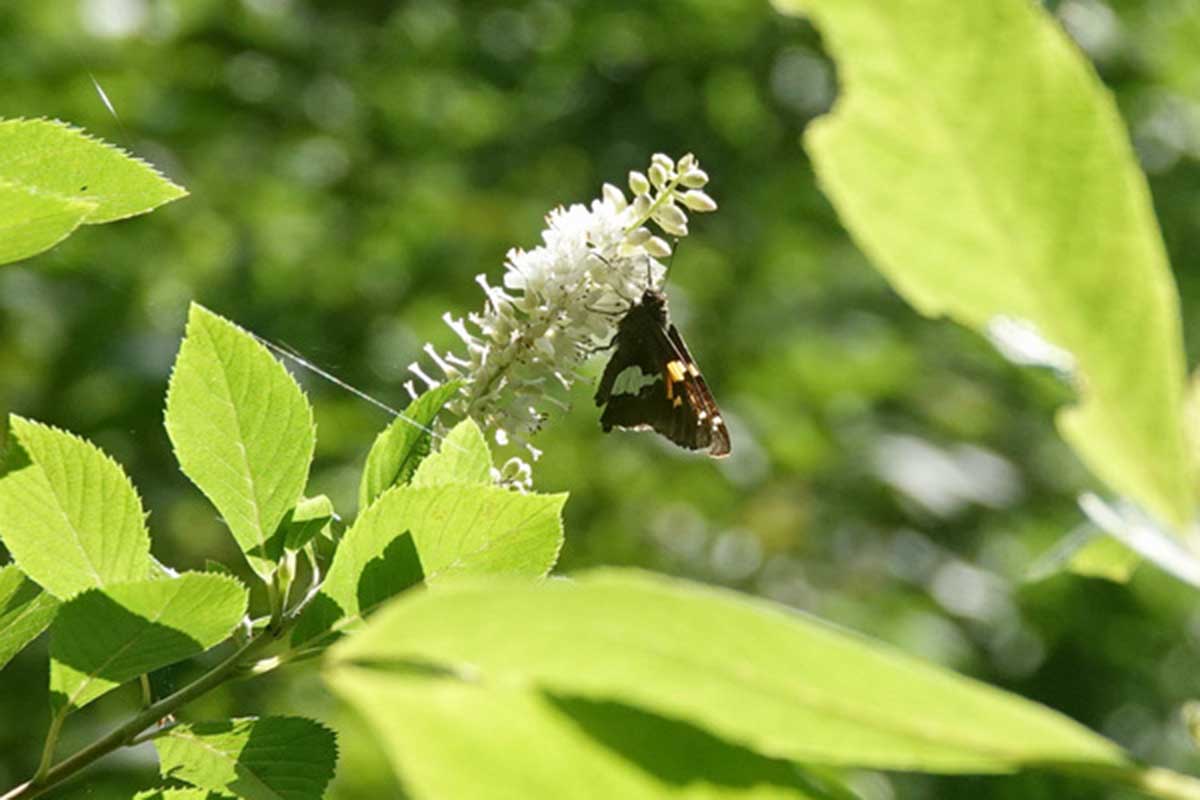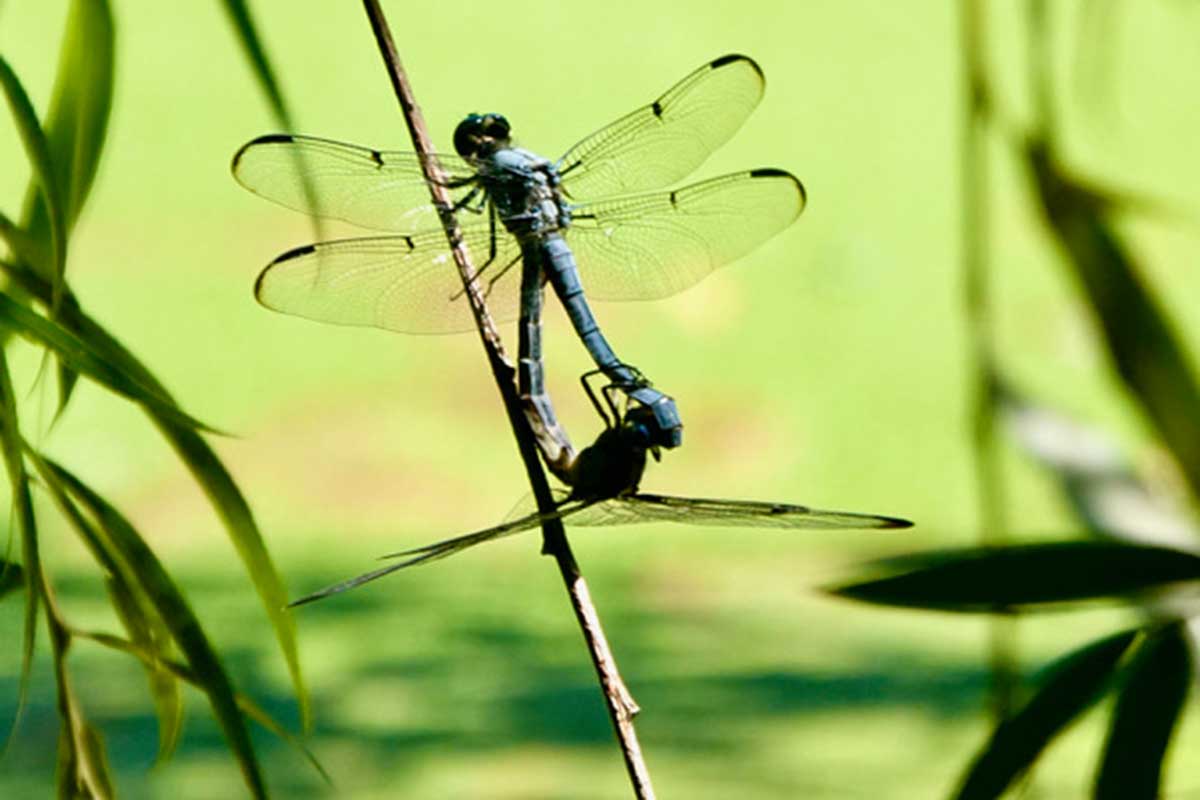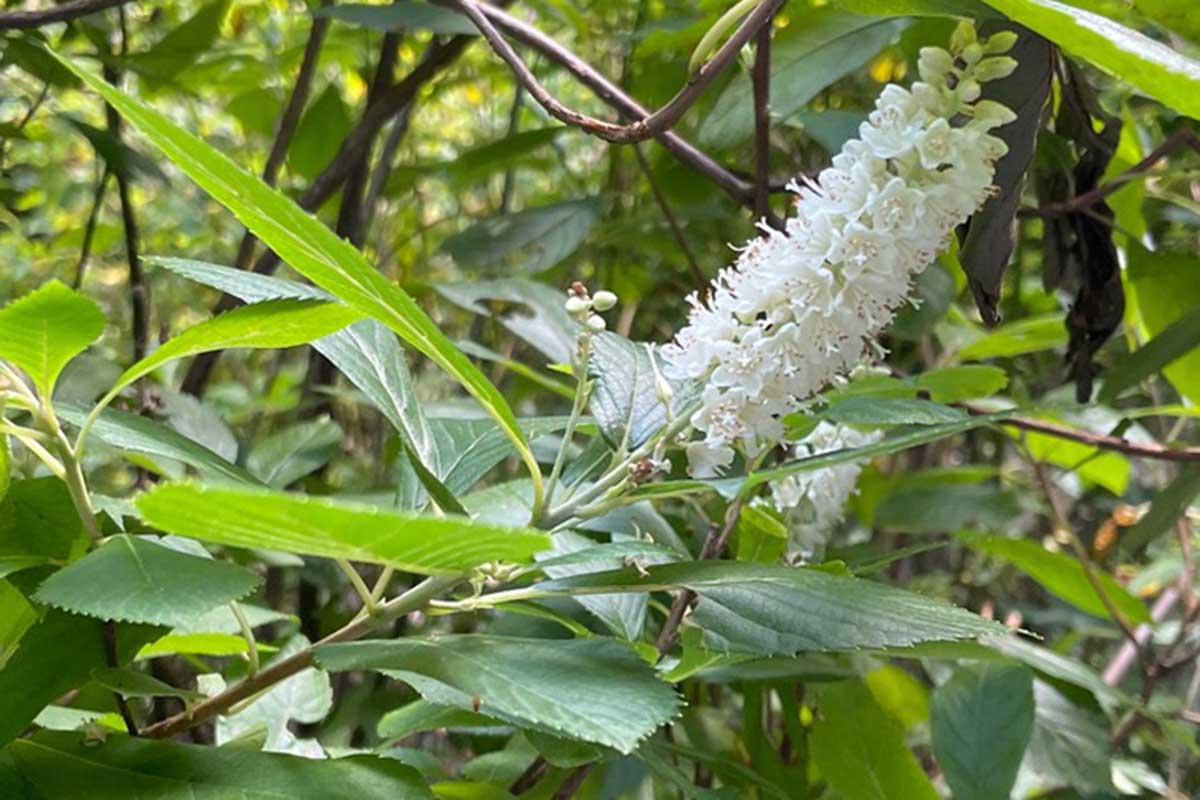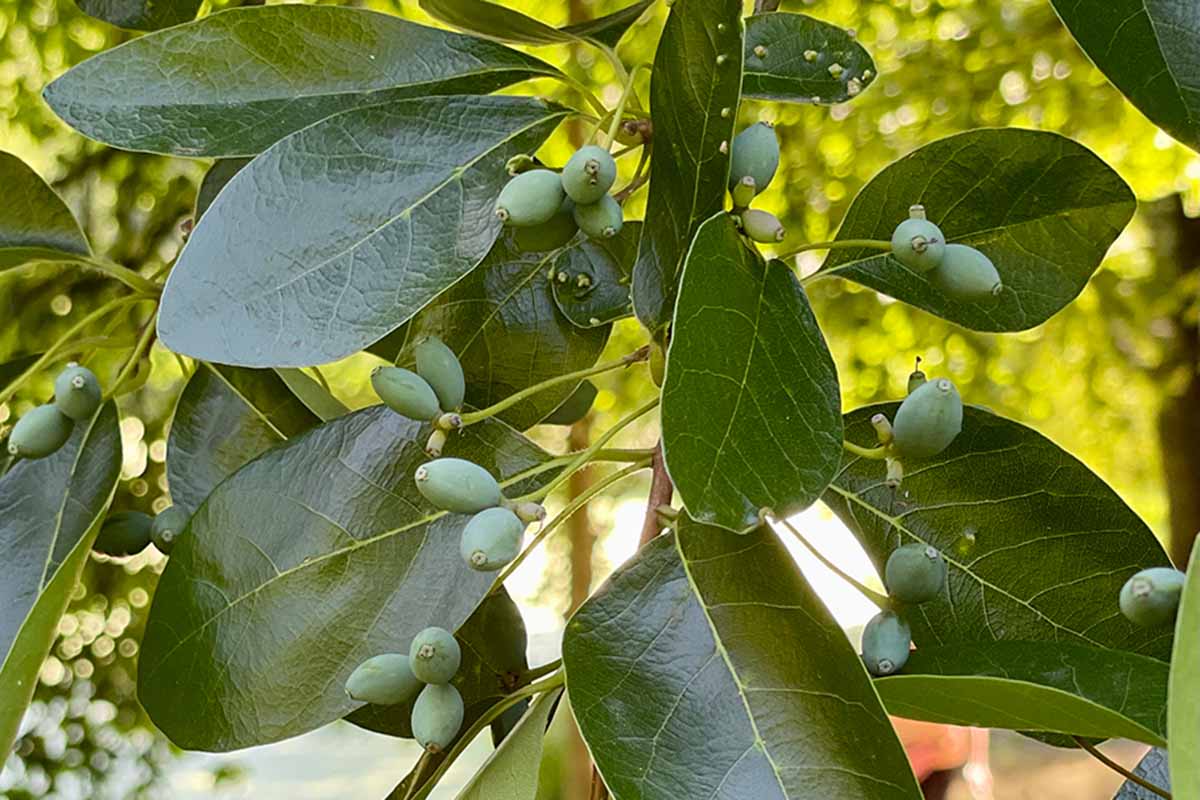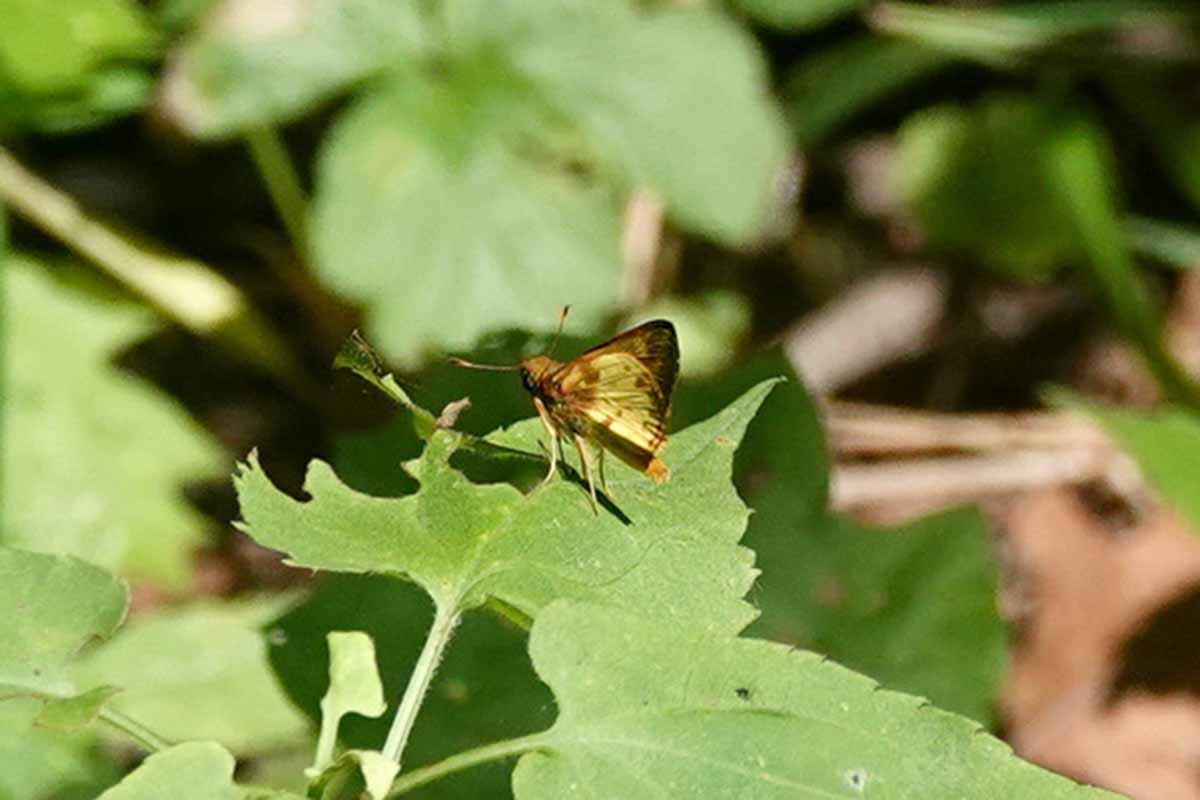Registrar: Richard Davis
Participants: 19
Weather: 82 F with humidity/heat index 85 F at start. Sunny, winds N/NE 4 mph.
Bird Species: 16
Nineteen Linnaeans and botany enthusiasts gathered on a simmering morning in the midst of an August heatwave to wander in available tree shade and light breezes around the Pool and briefly into the Ravine of northern Central Park. Many participants commented on the insight and enthusiasm of walk leader Regina Alvarez, whose history with Central Park and teaching experience are an excellent combination for transmitting knowledge of the plant life of the Park and the way it has been managed over the years.
She pointed out the plants that are native and those that are invasive. For example, we quickly encountered Pokeweed, which is native and produces berries that birds love but is highly toxic to humans. In contrast, Porcelain Berry, an invasive from temperate Asia in the grape family, should always be quickly removed from gardens and other habitats, as it will overwhelm and destroy native plant life. Then we came upon Mugwort, also not native, which was probably brought over by colonists as a medicinal plant. Mugwort, among other plants, produces compounds to deter insects; this can create a detectable odor, which wanes by late summer, after plant reproduction has occurred.
The native Hackberry offered an opportunity to examine galls, a gall being an abnormal growth on a plant that appears as a bump, wart, or bulb to wall off an offending invader—in this case, an insect egg that becomes a larva. The plant creates additional tissue to protect itself and the insect takes advantage of this to eat the tissue. Certain insect secretions further incentivize tissue production from the plant. A sort of back and forth between the plant and insect begins to occur. It also happens that birds know about galls and what is inside them, and they take the opportunity to eat them.
We noticed that the invasive Phragmites on the west end of the Pool at the new boardwalk (built with wood planks from Black Locust) are especially high. The Pool at this end is covered in Duckweed, one of the smallest plants in the world. It looks like algae, but in fact crowds out algae and creates food for ducks and shade for organisms beneath the surface. Mixed in with the Duckweed is Wolffia, the world’s smallest flowering organism.
There was a spirited discussion of Poison Ivy and the fact that half of the human population may not be allergic to it; however, it is not worth testing whether you fall in the unaffected or the affected group (potentially painful). Undisputed is the fact that Poison Ivy produces berries popular with 60 species of birds.
Towards the end of our walk we encountered Bittersweet Nightshade, a member of the tomato family. There was a brief discussion about nightshades that can affect autoimmune conditions like arthritis or inflammatory bowel disease when consumed.
Species Lists
Birds
Mallard
Rock Pigeon
Mourning Dove
Black-crowned Night-Heron
Downy Woodpecker
Eastern Kingbird
Warbling Vireo
Blue Jay
European Starling
American Robin
House Sparrow
Baltimore Oriole
Common Grackle
Black-and-white Warbler
American Redstart
Northern Cardinal
Plants
Trees—Native
Black Locust
Honey Locust
Hackberry
American Sycamore
Black Cherry
Tulip Tree
Tupelo Tree (Black Gum)
American Sweetgum Tree
Bald Cypress
Sassafras
Baby Oak Trees
Red Oak
Black Walnut
Red Maple
Red Buckeye
Pin Oak
Hornbeam
Sweetbay Magnolia
Hickory (species)
Serviceberry or Shad Bush
Trees—Hybrid
London Plane
Trees—Non-Native
Weeping Willow
White Mulberry
Ginkgo
Shrubs, Vines and Flowers—Native
Sweet Pepperbush
Purple Flowering Raspberry
Pokeweed
Hackberry
Blackberry
Jewelweed
Poison Ivy
Woodland Sunflower
Wolffia (Watermeal)
Duckweed
Virginia Knotweed
American Plantain
White Baneberry (Doll’s Eyes)
Spicebush
Wild Bergamot (Beebalm)
Native rose
Viburnum (species)
White Wood Aster
White Snakeroot
Cutleaf Coneflower
Purple Coneflower
Staghorn Sumac
Black Raspberry
Witch Hazel
Shrubs, Vines and Flowers—Non-native
European Plantain
Mugwort
Wineberry
Porcelain Berry
Japanese Knotweed
Bittersweet Nightshade
Grass—Native
Bottlebrush Grass
Grass—Non-native
Phragmites
Butterflies
Silver-spotted Skipper
Pearl Crescent
Zabulon Skipper
Gastropods
Snail
Odonates
Slaty Skimmer
Mammals
Eastern Gray Squirrel
Eastern Chipmunk
Brown Rat
Herps
Red-eared Slider
